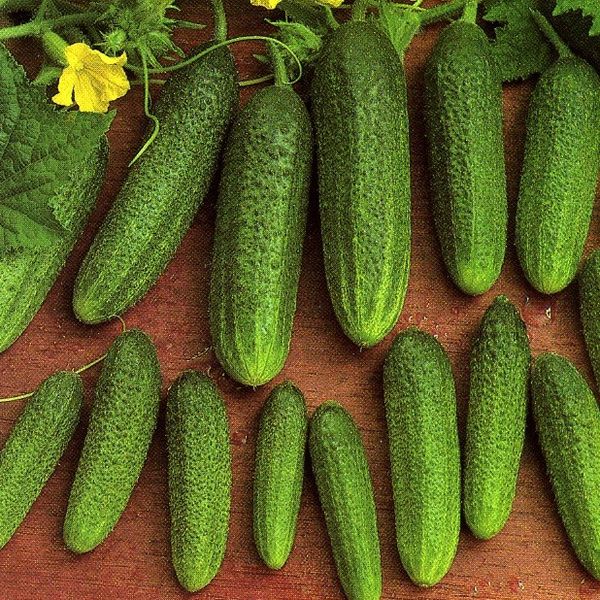Any summer resident cannot imagine his garden without cucumbers. Even if the plot is small, there must be at least a couple of cucumber bushes on it. Today we are offered a variety of cucumber varieties, among which the Libela F1 variety is popular. Description, benefits, rules of care in the article.
Table of contents
Description and characteristics of cucumber variety Libele F1
The founder of Libelle F1 cucumbers Friedrich Kampe - German.The variety has an average degree of maturity, the growing season is 50-55 days.
Suitable for growing in open ground and in greenhouses. Libela can be grown even on the balcony at home. True, he needs pollination.
Characteristic of a cucumber of this grade:
- the plant is long-leafy, the fruit is elongated;
- the shade of the peel is dark green with yellowish longitudinal stripes;
- average fruit weight 120-150 g;
- average length 15 cm;
- productivity from one square meter of 8-10 kg.
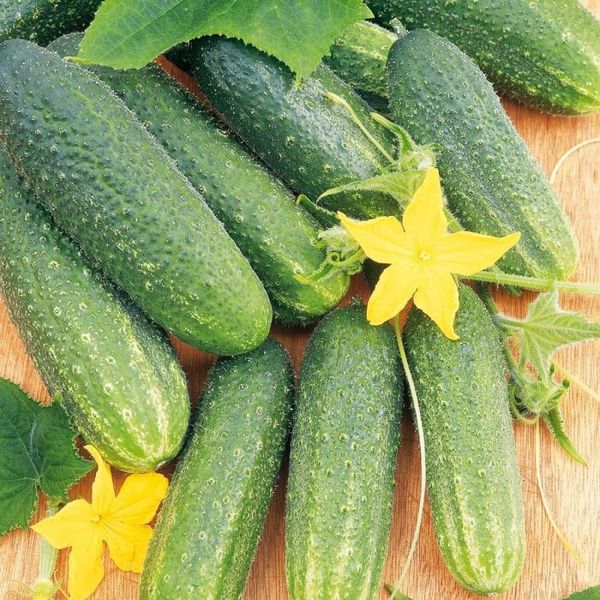
Cucumbers have crispy, sweet, tender flesh. Seeds are small and practically not felt. Libelle F1 loves heat and moisture, has an underdeveloped root system. However, resistant to various kinds of pests and diseases.
Advantages and disadvantages
The variety has many advantages:
- excellent taste;
- high stability to diseases;
- high yield;
- good for transportation;
- have a neat presentation.
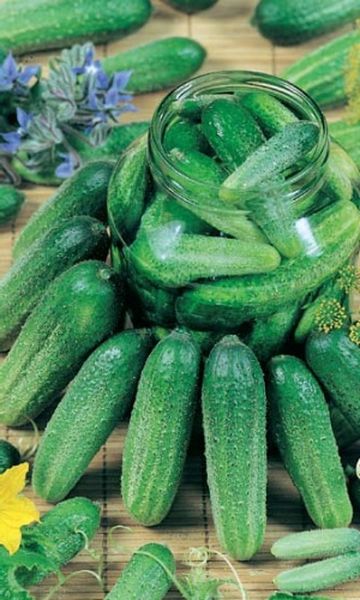
Disadvantages:
- with the wrong care can have a bitter taste;
- late harvest is too big for roll-ups.
Requirements for soil for planting
Since the root system is weak enough, the ground is necessary before planting fertilize with humus or manure.
For good growth of cucumbers, air must be maintained in the area + 20 + 22 degreesand at night not lower +10 degrees, otherwise there will be a delay in the development of the plant. The variety loves high soil moisture, so it needs regular watering. Good fruit in the open field. After planting, the soil needs fertilizing with mineral fertilizers, loosening.
It is necessary to choose a calm and calm place for landing. If the soil is acidic, then add dolmite flour or lime in the proportion of 1 liter per 1 sq. M.
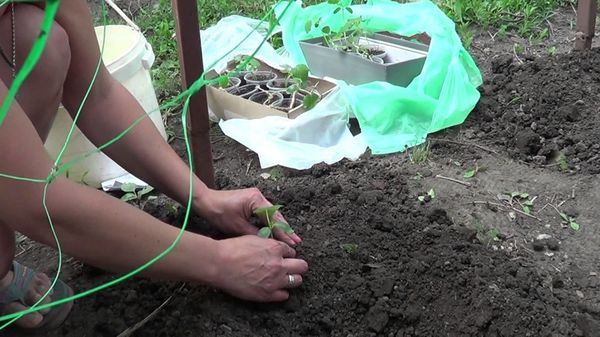
Sowing rules
If the seeds are covered with a colored shell, they can be planted in the soil without germination. Pre-they can be soaked in hot water for half an hour for disinfection. Seeds are best used at least two years of age.
Seeds can be soaked for 48 hours in a solution Epin. Thanks to the solution, it is possible to significantly increase the germination and resistance of cucumbers to diseases.
Before planting it is recommended to sort the seeds. To do this, immerse them in water with salt. Those seeds that pop up can be thrown away - they are empty.
In warm climates You can plant seeds in open ground. In the cold - in greenhouses and hotbeds. In the daytime greenhouses open for pollination of flowers by bees.
Soil preparation for planting
- autumn after harvesting dig up the soil;
- in the spring level the plot rake, remove weeds;
- In the beginning or in the middle of May fertilizer should be applied - mineral and organic (10kg per 1 sq. m.).
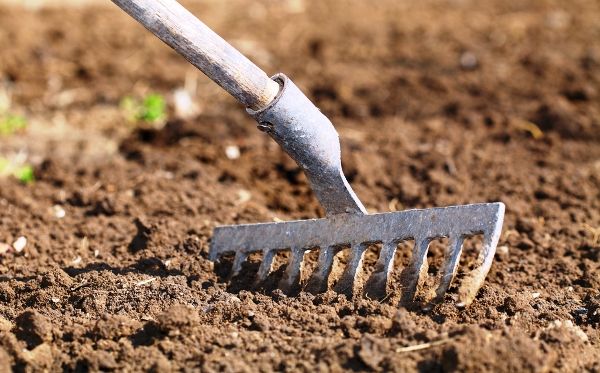
Seed planting rules
- The wells are planted 3 seeds each Libelle to a depth of 2-3 cm.
- Holes must be spaced apart. 30 cm. Per square meter for 4 holes.
- Before planting in each hole, it is advisable to add a little rotted compost.
- Landing watered and covered with foil. When t rises above 12 degrees at night, the film can be removed.
The best time for planting cucumbers in open ground is the end of May and the beginning of June. Early sowing is possible until May 15. If the method is not seed, but seedling, then the harvest can be obtained 2 weeks earlier.
Crop care after sowing
After planting cucumbers, the following care is required:
- watering;
- fertilizer;
- pest protection;
- weeding;
- loosening, soil mulching;
- hilling.
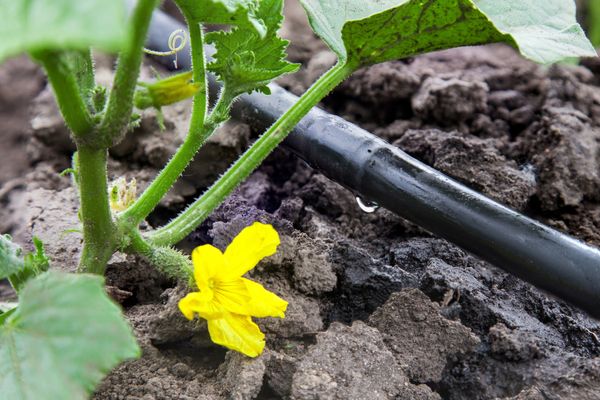
Watering must be done:
- before flowering 3-6 liters on 1 sq.m. once a week;
- in the period of fruiting 6-10 liters every three days.
Water for irrigation should be warm, the procedure is performed either early in the morning or in the evening. Water under the bushso that water does not fall into the leaves.
Fertilizers to make during the entire period of growth of the root.
Schedule:
- first feeding 2 weeks after planting;
- then every 2 weeks to make nitrogen, phosphorus and potassium. It is better to alternate between organics and minerals.
Every 10 days the soil should be loosened to a depth of 5-7 cm. The procedure should be carried out carefully so as not to damage the roots. If the roots are bare, then you need to spud the soil. It will also help protect the crop from diseases and pests.
If the planting was carried out by the vertical method, then you need to tie a plant with a length of more than 30 cm.Tying is done with soft strips of fabric.
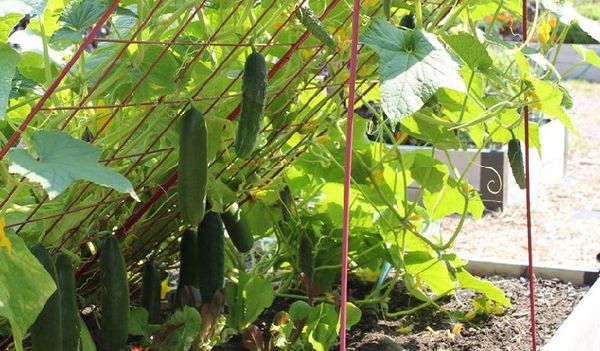
Diseases and their prevention
Libelle F1 resistant to diseases and pests. May be subject to such diseases as:
- Fusarium;
- powdery mildew;
- gray or white rot.
The causes of these diseases:
- if at the time of planting the soil was already contaminated;
- non-compliance with temperature conditions, temperature fluctuations;
- lack of dressings, poor lighting, drafts;
- watering with cold water.
For the prevention of diseases you need remove affected plants regularly. In the autumn the soil is loosened, last year's tops are harvested and burned. On the beds should be clean and tidy.
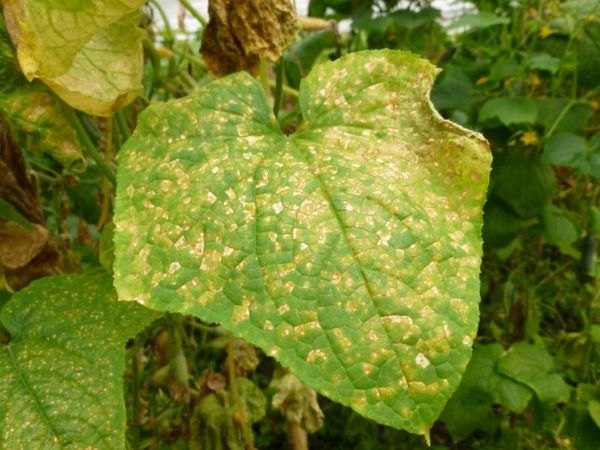
Harvesting and storage rules
When the plant starts to produce ripe fruit, need to harvest. The more often pick cucumbers, the greater the yield you can get.
It is necessary to pick up root crops in the morning, to cut them with special garden scissors.
Storage nuances:
- hard cucumbers are stored longer. If the vegetable is soft, then you need to eat it;
- store fruit is desirable in cold water, without hit of sunshine;
- do not store fruit in a package and closed containers, cans;
- this variety can be stored in a wooden boxwhose bottom is served by a newspaper;
- air humidity in the room should be 80%;
- Can be stored for a long time dense cucumbers, without damage and stains.
The ideal t mode for storing cucumbers is temperature. + 1 + 5 degrees. In such conditions, they can keep a fresh look for 2 weeks.
The variety Libelle F1 is an excellent choice for those who love cucumbers and planted a plant in their garden every year. To increase the quality and quantity of the crop, it is important to observe the rules of planting and care. You have a rich harvest!
